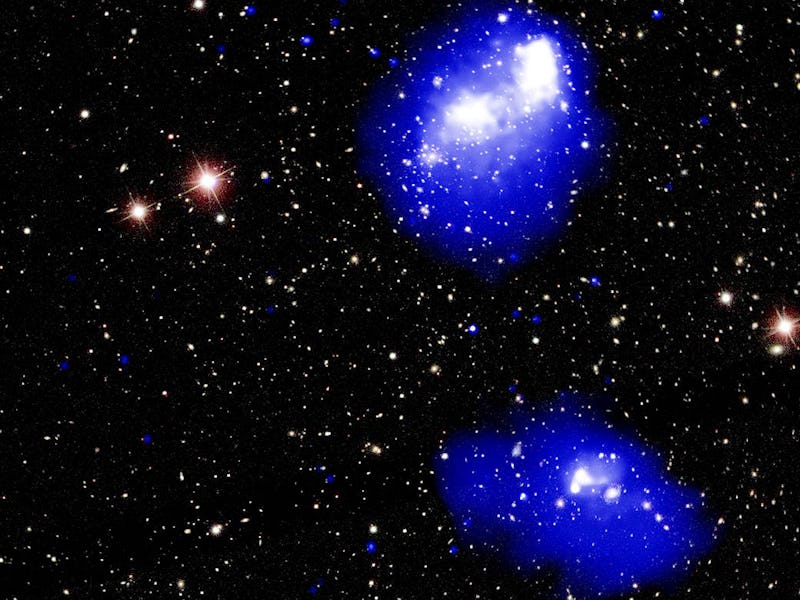NASA data undermines a fundamental principle of cosmology
Galaxy clusters revealed a hidden fact about the universe.

In an unprecedented effort, astronomers observed 800 of the largest structures of the universe, only to discover the cosmos may not be behaving the way they thought it did.
Following the Big Bang, so the prevailing theory goes, the universe rapidly grew in size. Today, it is believed to still be expanding outward, albeit at a much slower rate compared to its initial growth. This theory, known as the isotropy hypothesis, argues the universe is not only expanding, but doing so at the same rate in all directions.
But the new data, released in April this year, suggest a fundamental component of the theory is wrong: The universe is expanding — but it is not expanding at the same rate in all directions.
INVERSE IS COUNTING DOWN THE 20 MOST UNIVERSE-ALTERING MOMENTS OF 2020. THIS IS NUMBER 13. SEE THE FULL LIST HERE.
The study relies on observations of some of the cosmos' largest structures, galaxy clusters, made by three X-ray observatories: the European Space Agency’s XMM-Newton, NASA’s Chandra X-Ray observatory, and the German-led ROSAT.
The researchers examined 800 galaxy clusters, measuring the temperature of each cluster's hot gas. They then compared these data with how bright the clusters appeared in the sky. If the universe is isotropic, then galaxy clusters of similar temperatures which are located at similar distances from Earth will have similar levels of luminosity. But that appears not to be the case.
This image shows an ancient galaxy cluster spotted by the Hubble Space Telescope.
Instead, the researchers found galaxy clusters with similar properties and temperatures appear to be less bright in one direction of the sky and brighter than expected in another direction. These differences follow a clear pattern depending on the direction of the sky, according to the study.
The data suggest the universe is anisotropic, meaning the rate of expansion has a different value when measured from different directions.
The scientists believe these differences may be caused by dark energy, which is thought to account for more than 60 percent of the universe. Although little is known about dark energy, scientists believe it is not uniform. Dark energy may be stronger in some parts of the universe and weaker in other parts. If true, then it could cause the universe to expand at different rates in different places.
Ultimately, the universe will not stop expanding in one direction faster than any other, because it does not need more 'space' to expand — its very expansion changes the metric of spacetime itself.
INVERSE IS COUNTING DOWN THE 20 MOST UNIVERSE-ALTERING MOMENTS OF 2020. THIS IS NUMBER 13. Read the original story.
This article was originally published on